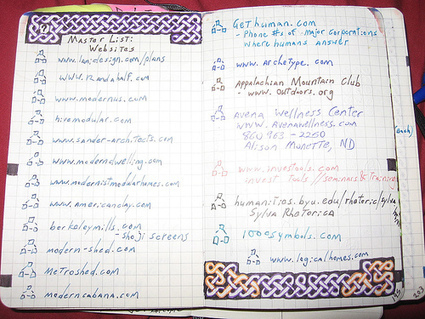
|
Scooped by Robin Good |
Beth Kanter, one of the key go-to-person for communication strategy when it comes to NGOs, provides a useful reminder of the value of creating lists for content marketing objectives alongside some good links to list-making examples and list-building tools.
My comment: One thing that differentiates good "lists" from bad ones, is not often visibile by looking just at the surface.
Good lists in my view are characterized by these three traits:
1) Short - long lists are tiring and not very useful
2) Categorized - "groups" help scanning and finding what you're looking for
3) Commented - excerpts from about pages as list item descriptions are not very useful, as what makes a real difference in a list is your insight, opinion or evaluation into why that item is in that list.
Without these elements in fact, just about anyone can take a search tool and assemble the "Best of" whatever software category in a ridicule amount of time, while not really providing anything useful or reliable.
That's the difference between a list and a curated list.
The list "as is" makes you work more to check and verify everything that's in the list, while the curated one saves you time in finding or reminding you rapidly what is exactly that you need.
Useful. Resourceful. 7/10
Original post: http://www.bethkanter.org/lists/



 Your new post is loading...
Your new post is loading...







Robin Good's insight:
Beth Kanter, one of the key go-to-person for communication strategy when it comes to NGOs, provides a useful reminder of the value of creating lists for content marketing objectives alongside some good links to list-making examples and list-building tools.
My comment: One thing that differentiates good "lists" from bad ones, is not often visibile by looking just at the surface.
Good lists in my view are characterized by these three traits:
1) Short - long lists are tiring and not very useful
2) Categorized - "groups" help scanning and finding what you're looking for
3) Commented - excerpts from about pages as list item descriptions are not very useful, as what makes a real difference in a list is your insight, opinion or evaluation into why that item is in that list.
Without these elements in fact, just about anyone can take a search tool and assemble the "Best of" whatever software category in a ridicule amount of time, while not really providing anything useful or reliable.
That's the difference between a list and a curated list.
The list "as is" makes you work more to check and verify everything that's in the list, while the curated one saves you time in finding or reminding you rapidly what is exactly that you need.